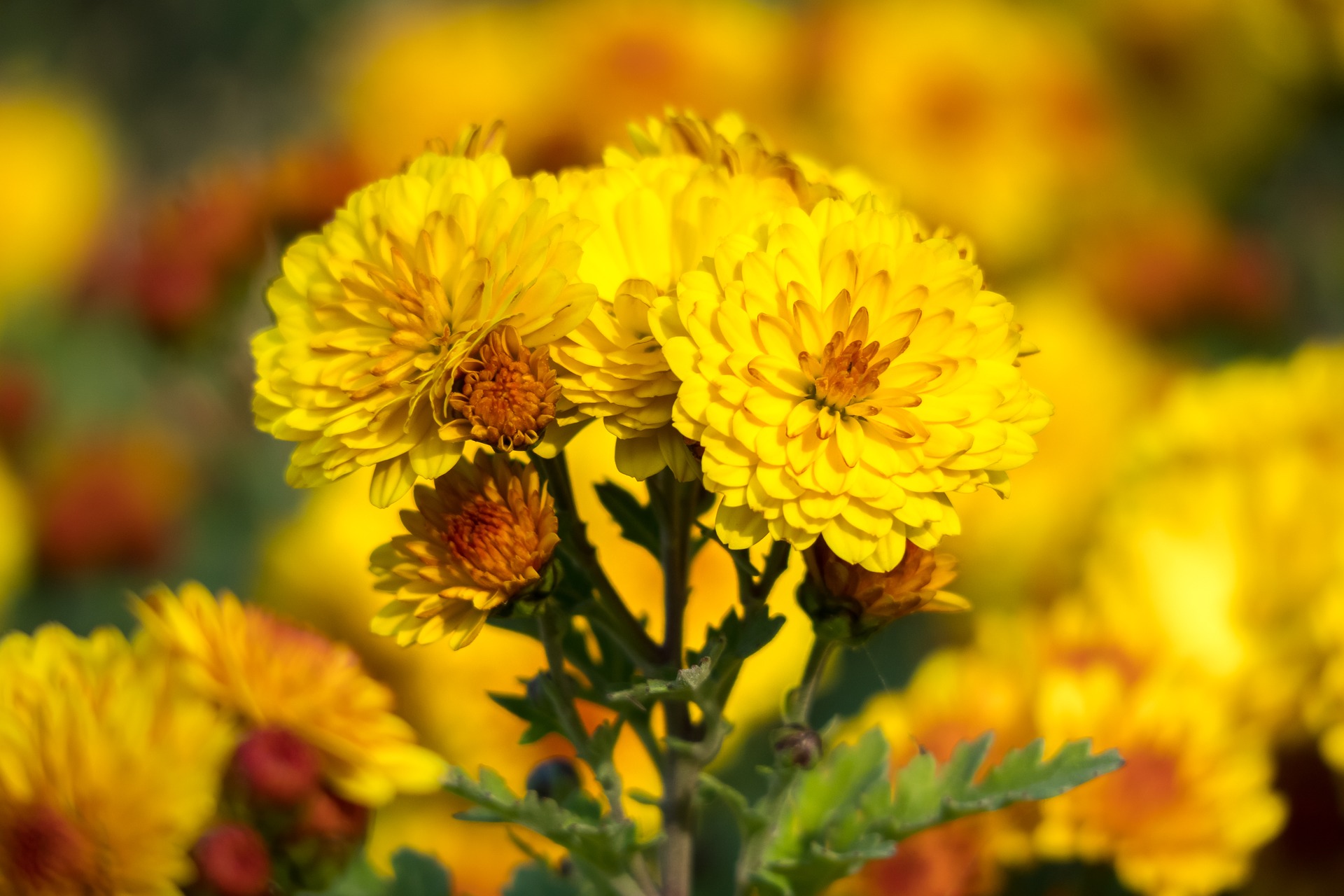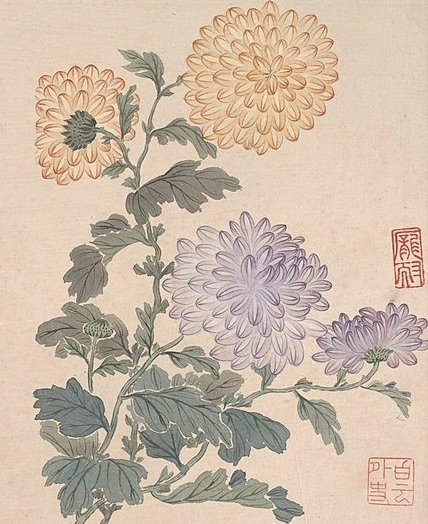
On your birthday it’s not uncommon to receive a present featuring your birthstone or zodiac symbol. However, few people know about their birth flower. In this series, we’ll be looking at the birth flower of each month, according to Joseph Hammer-Pugstall’s The Language of Flowers.
As we move into the penultimate month of the year, here in the Northern hemisphere our days are getting much shorter, the air is getting bitingly cold and the leaves have all but fallen from the trees. Plant life is clinging on, but some species are still fighting to put out flowers. One plant in particular is the Chrysanthemum.
The name Chrysanthemum means “golden flower” in Ancient Greek, with “chrysos” meaning “golden” and “anthemon” meaning “flower“. With their beautiful, full blooms, Chrysanthemums have been widely cultivated into many varieties and have been dubbed the “Flower of Happiness”, but they’re also steeped in cultural significance and have culinary and insecticidal uses.

Along with a few other birth flowers I’ve covered, Chrysanthemums, from the Chrysanthemum genus, are another member of the Daisy family (Asteraceae). As a result, the part of the plant we would usually refer to as the flower is not a flower, but instead a collection of flowers. This collection of flowers is called an inflorescence and you can find out more about them in my Common Daisy post.
You may have come across Chrysanthemum tea, a popular summertime beverage in China, but Chrysanthemum flowers are not limited to this use. They are also a great natural insecticide. When the flowers are crushed, pyrethrins can be extracted and suspended in water or oil, or used as a powder. Pyrethrins are organic compounds that attack insect nervous systems and have been used as insecticides in China from as early as 1000 BC.
Chrysanthemums are also important in Chinese art. The Four Noble Ones in Chinese art refer to four plants, one of which is the Chrysanthemum and the others being the Plum Blossom, the Orchid and the Bamboo. The Chrysanthemum symbolises the ability to withstand adversities, as it blooms in autumn when other plant life is dying back.
November, for me, is always a strange month. I can’t quite get excited for Christmas, and the days are too short and too dark to get to spend much time exploring the natural world. As we move towards winter, Chrysanthemums, the Flower of Happiness, provides much needed light and warmth. It’s almost as if it was designed to remind us of the suns imminent return.
Thank you for reading this post! If you enjoyed it and want to support the blog, you can leave me a tip here. All the money I raise is going towards better camera equipment, so you can enjoy higher quality images and videos. To ensure you don’t miss December’s birth flower, be sure to follow Fronds with Benefits here, on Twitter, Instagram or Facebook.
Image credits
Hero image: Shirley Hirst
White Chrysanthemums: Couleur
Yellow Chrysanthemum: Thomas B.
Orange Chrysanthemum: Anrita1705












Leave a comment